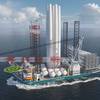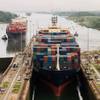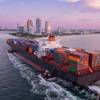Japan, U.S. Look to Expand Naval Cooperation
Japanese Prime Minister Shinzo Abe's push to allow Tokyo to come to the aid of an ally under attack will pave the way for closer cooperation between U.S. and Japanese forces across Asia, a top U.S. commander said on Tuesday.
Expanded training and joint missions could extend from Japan through the disputed South China Sea - claimed in whole or part by China, Vietnam, the Philippines and other nations - into the Indian Ocean.
Neither the United States nor Japan have territorial claims in the South China Sea, but the Seventh Fleet operates in the area. A Japanese naval presence there could irritate Beijing.
Abe's government plans to submit bills to parliament in coming months to ratify his cabinet's decision last year to allow Japan to exercise its right of collective self-defense. Abe's coalition enjoys a big majority in parliament.
"CSD makes it easier for the Seventh Fleet and JMSDF to exercise and operate across the Indo Asia Pacific," Admiral Robert Thomas, commander of the force said aboard his command ship, the USS Blue Ridge, in Yokohama.
The Japanese "have the capacity and capability for operations in international waters and international airspace anywhere on the globe," he told a media briefing with Admiral Eiichi Funada, commander of the JMSDF.
Chinese foreign ministry spokeswoman Hua Chunying said the Japan-U.S. alliance "should not exceed its bilateral scope and nor should it harm the security of interests of countries in the region".
"We hope that relevant Japan-U.S. cooperation and the development of their relations can play a proactive and constructive role for regional peace, development and stability," she told a daily news briefing in Beijing.
A broader regional military role for Japan is being welcomed by Washington, as it pushes its allies in Asia, including Australia, to do more as China takes an increasingly assertive stance in territorial disputes in the region.
Japan and the United States have said they will decide by the end of June on a new set of guidelines for their decades-old alliance that will give Japan a more prominent role.
The most powerful naval fleet in Asia, the U.S. Seventh Fleet remains the main counterweight to China's growing maritime power in Asia. Centered around a carrier battle group that operates out of Japan, the U.S. Seventh Fleet includes some 80 vessels, 140 aircraft and 40,000 sailors making it the most powerful naval force in the western Pacific.
Japan's navy consists of around 120 vessels, including more than 40 destroyers and a submarine force of around 20 boats.
Reporting by Tim Kelly










